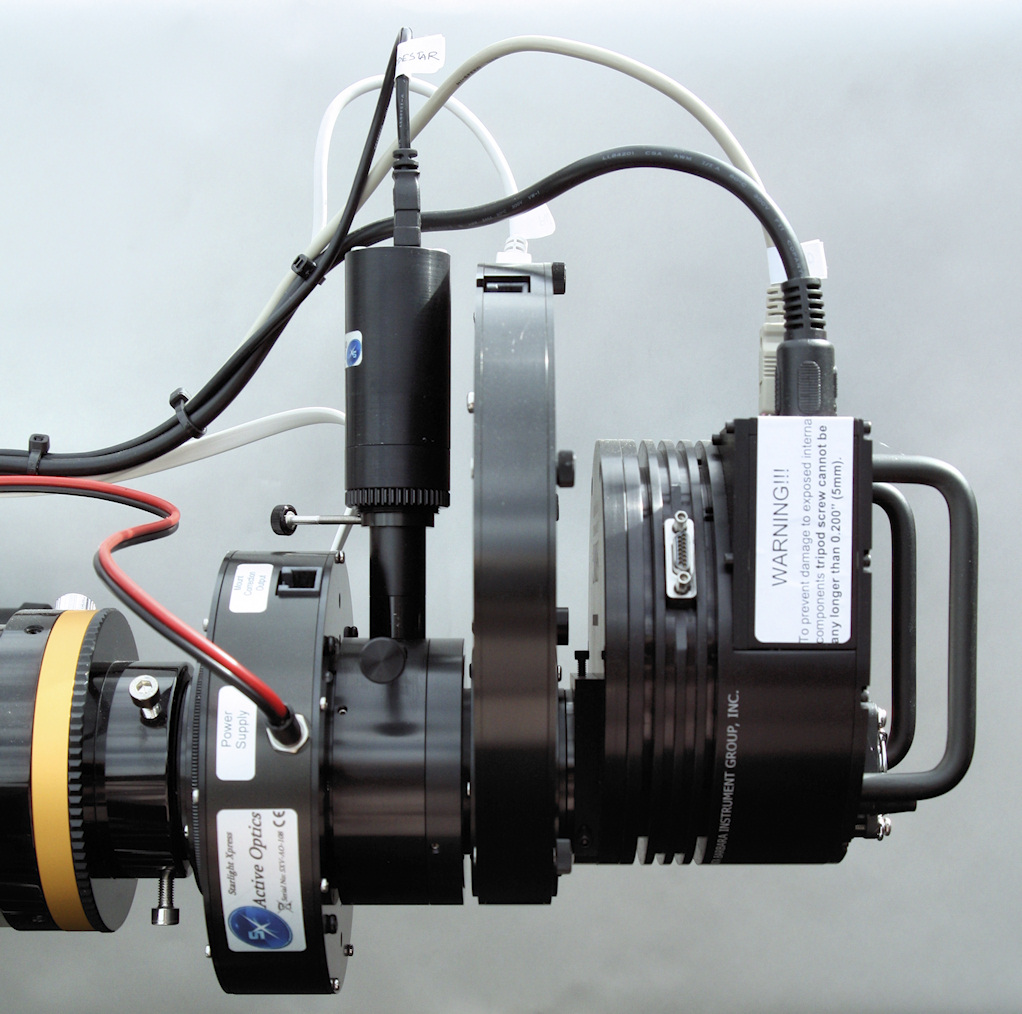 In January 2012 I upgraded to an SBIG ST-10XME CCD camera and at the same time purchased a Starlight Xpress SXV-AO-LF active optics unit to improve guiding accuracy.
In January 2012 I upgraded to an SBIG ST-10XME CCD camera and at the same time purchased a Starlight Xpress SXV-AO-LF active optics unit to improve guiding accuracy.
The ST-10XME has a quantum efficiency (QE) of over 85% between 560-665 nm which includes the Hα emission line at 656.3 nm. It is a no anti-blooming gate (NABG) sensor which accounts for its high QE but the negative side of this is that when a pixel saturates a bloom (or vertical streak) is produced in the resulting image. My rationale for choosing the ST-10XME was the additional sensitivity given high light pollution levels in central Bristol and my decision to operate the Megrez 120 at F/7.5 (900mm FL). I currently use the Wodaski MaxIm DL plug-in to de-bloom my images.
The SXV-AO-LF unit works very well under ACP control. ACP automates guide star selection which avoids the hot pixels in the Lodestar guider and optimises exposures to give short track times (< 0.5 seconds) and fast guide rates (≥ 4 Hz). It has transformed the performance of my EQ6 mount. I can now routinely achieve round stars (Roundness ≤ 0.05) and FWHM values ≤ 2 arc seconds under moderate to good seeing. During the galaxy season with sparse star fields I do sometimes revert to standard off-axis guiding when selecting a suitable guide star for the AO unit is sub-optimal.